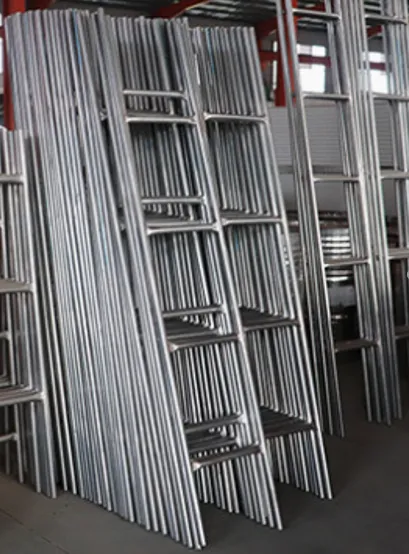loading...
- No. 9, Xingyuan South Street, Dongwaihuan Road, Zaoqiang County, Hengshui, Hebei, China
- admin@zjcomposites.com
- +86 15097380338
- Welcome to visit our website!
structural frp
Structural FRP A Revolution in Construction Materials
In the realm of construction and civil engineering, the quest for stronger, lighter, and more durable materials is ever-present. One such material that has garnered significant attention in recent years is Fiber Reinforced Polymer (FRP). This innovative composite material has revolutionized structural engineering by offering unique advantages over traditional construction materials such as steel and concrete.
What is Structural FRP?
Fiber Reinforced Polymer (FRP) is a composite material made from a polymer matrix reinforced with fibers, typically glass, carbon, or aramid. The combination of these materials results in a lightweight and high-strength material that can be molded into various shapes, making it suitable for a wide range of structural applications. One of the distinguishing features of FRP is its high resistance to corrosion, which enhances its longevity and reduces maintenance costs significantly.
Advantages of Structural FRP
1. Lightweight Nature One of the primary advantages of FRP is its lightweight nature. This characteristic allows for easier handling and transportation during construction, reducing labor costs and the time required for installation. The lightweight also enables the design of more efficient structural systems, as less weight on the foundation and supports allows for greater architectural freedom.
2. Corrosion Resistance Unlike traditional materials, FRP does not rust or corrode when exposed to harsh environmental conditions, chemicals, or moisture. This makes it an ideal choice for structures in marine environments, sewage treatment facilities, or chemical plants, where exposure to corrosive elements is a concern. The longevity of FRP structures often translates to lower maintenance costs over time.
3. High Strength-to-Weight Ratio FRP exhibits an impressive strength-to-weight ratio, meaning that it offers great structural strength without the added weight. This characteristic is beneficial for creating structures that require both durability and reduced load. Engineers can design slender structures that maintain high performance while using less material, contributing to sustainability efforts.
4. Design Flexibility The versatility of FRP allows for creative designs that would be challenging or impossible with conventional materials. FRP can be molded into complex shapes and sizes, enabling architects to explore innovative aesthetics while satisfying engineering requirements. This flexibility extends to applications such as bridges, buildings, and sculptures.
structural frp

5. Thermal and Electrical Insulation FRP provides excellent thermal and electrical insulation properties. This quality makes it suitable for applications where insulation from temperature fluctuations and electrical conductivity is critical, such as utility poles, flooring systems, and various electronic components.
Applications of Structural FRP
The versatility of FRP has led to its application across various sectors within construction and engineering. Some notable applications include
- Bridges FRP is increasingly being used in bridge construction due to its lightweight nature and resistance to environmental degradation. Prefabricated FRP bridge components can be assembled quickly, reducing traffic disruption. - Reinforcement of Existing Structures FRP is often utilized to retrofitting and strengthening existing structures, particularly in seismic regions. By wrapping or bonding FRP sheets to concrete or masonry, engineers can enhance load-bearing capacity and improve resilience against earthquakes.
- Building Components FRP is used in various building components, including beams, columns, and panels. Its aesthetic appeal combined with structural benefits makes it an ideal choice for modern architecture.
Challenges and Considerations
Despite its many advantages, there are challenges to the widespread adoption of FRP. The initial costs can be higher than traditional materials, and the long-term performance can be variable based on factors such as environmental exposure and the quality of manufacturing. Additionally, there is a need for more standardized practices and codes to guide the use of FRP in construction.
Conclusion
Structural Fiber Reinforced Polymer is poised to change the landscape of construction and civil engineering significantly. With its lightweight, corrosion-resistant, and high-strength properties, FRP provides unique solutions for modern construction challenges. As technology advances and the industry adapts, the use of FRP is likely to grow, paving the way for more sustainable, innovative, and efficient structures. The future of structural engineering is indeed bright with the incorporation of this revolutionary material.
-
The Rise of FRP Profiles: Strong, Lightweight, and Built to LastNewsJul.14,2025
-
SMC Panel Tanks: A Modern Water Storage Solution for All EnvironmentsNewsJul.14,2025
-
GRP Grating: A Modern Solution for Safe and Durable Access SystemsNewsJul.14,2025
-
Galvanized Steel Water Tanks: Durable, Reliable, and Ready for UseNewsJul.14,2025
-
FRP Mini Mesh Grating: The Safer, Smarter Flooring SolutionNewsJul.14,2025
-
Exploring FRP Vessels: Durable Solutions for Modern Fluid HandlingNewsJul.14,2025
-
GRP Structures: The Future of Lightweight, High-Performance EngineeringNewsJun.20,2025
